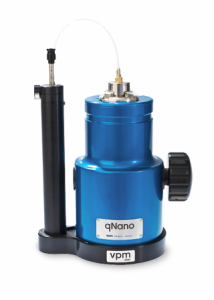How are they planning to make people cry on command or use a swab on your eyeball? In general, I like the idea of using tears instead of other bodily secretions but it’s the practicalities that have me questioning how this kind of diagnostic test could be implemented. In any event, here’s more from a July 20, 2022 news item on phys.org,
Going to the doctor might make you want to cry, and according to a new study, doctors could someday put those tears to good use. In ACS Nano, researchers report a nanomembrane system that harvests and purifies tiny blobs called exosomes from tears, allowing researchers to quickly analyze them for disease biomarkers. Dubbed iTEARS, the platform could enable more efficient and less invasive molecular diagnoses for many diseases and conditions, without relying solely on symptoms.
…
A July 20, 2022 American Chemical Society (ACS) news release (also on EurekAlert), which originated the news item, explains the work in more detail,
Diagnosing diseases often hinges on assessing a patient’s symptoms, which can be unobservable at early stages, or unreliably reported. Identifying molecular clues in samples from patients, such as specific proteins or genes from vesicular structures called exosomes, could improve the accuracy of diagnoses. However, current methods for isolating exosomes from these samples require long, complicated processing steps or large sample volumes. Tears are well-suited for sample collection because the fluid can be collected quickly and non-invasively, though only tiny amounts can be harvested at a time. So, Luke Lee, Fei Liu and colleagues wondered if a nanomembrane system, which they originally developed for isolating exosomes from urine and plasma, could allow them to quickly obtain these vesicles from tears and then analyze them for disease biomarkers.
The team modified their original system to handle the low volume of tears. The new system, called “Incorporated Tear Exosomes Analysis via Rapid-isolation System” (iTEARS), separated out exosomes in just 5 minutes by filtering tear solutions over nanoporous membranes with an oscillating pressure flow to reduce clogging. Proteins from the exosomes could be tagged with fluorescent probes while they were still on the device and then transferred to other instruments for further analysis. Nucleic acids were also extracted from the exosomes and analyzed. The researchers successfully distinguished between healthy controls and patients with various types of dry eye disease based on a proteomic assessment of extracted proteins. Similarly, iTEARS enabled researchers to observe differences in microRNAs between patients with diabetic retinopathy and those that didn’t have the eye condition, suggesting that the system could help track disease progression. The team says that this work could lead to a more sensitive, faster and less invasive molecular diagnosis of various diseases — using only tears.
…
Here’s a link to and a citation for the paper,
Discovering the Secret of Diseases by Incorporated Tear Exosomes Analysis via Rapid-Isolation System: iTEARS by Liang Hu, Ting Zhang, Huixiang Ma, Youjin Pan, Siyao Wang, Xiaoling Liu, Xiaodan Dai, Yuyang Zheng, Luke P. Lee, and Fei Liu. ACS Nano 2022, XXXX, XXX, XXX-XXX DOI: https://doi.org/10.1021/acsnano.2c02531 Publication Date:July 20, 2022 © 2022 American Chemical Society
This paper appears to be open access.
